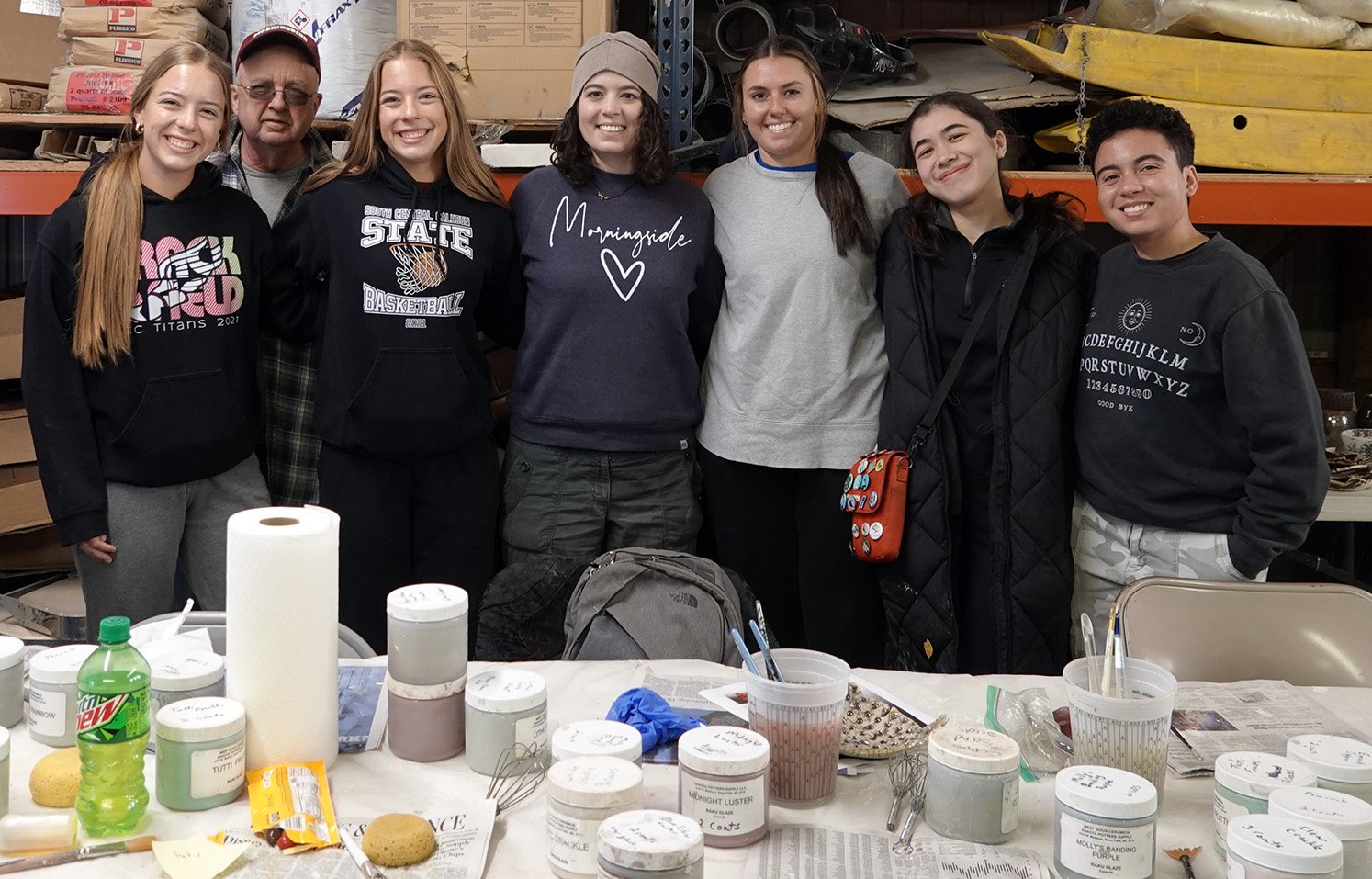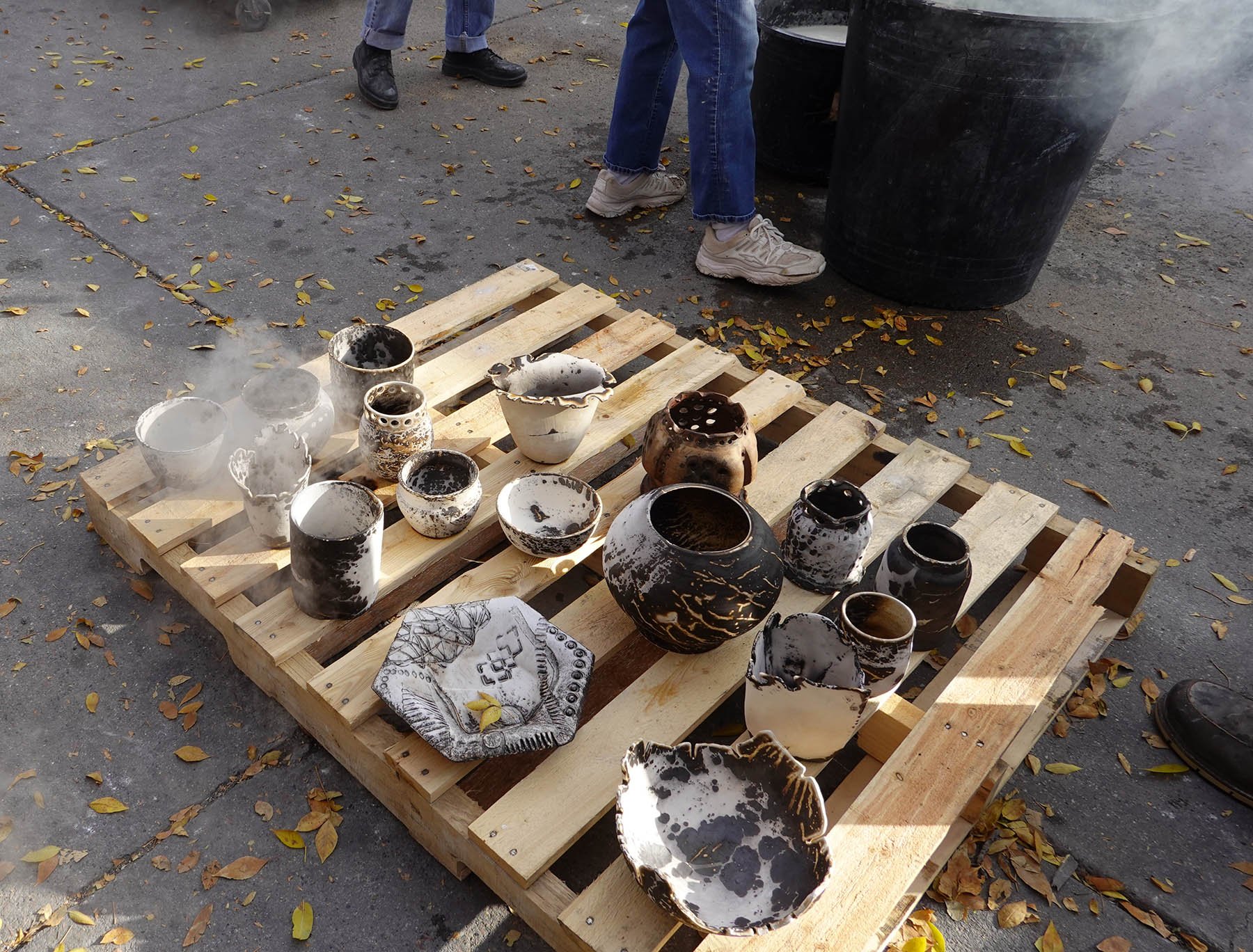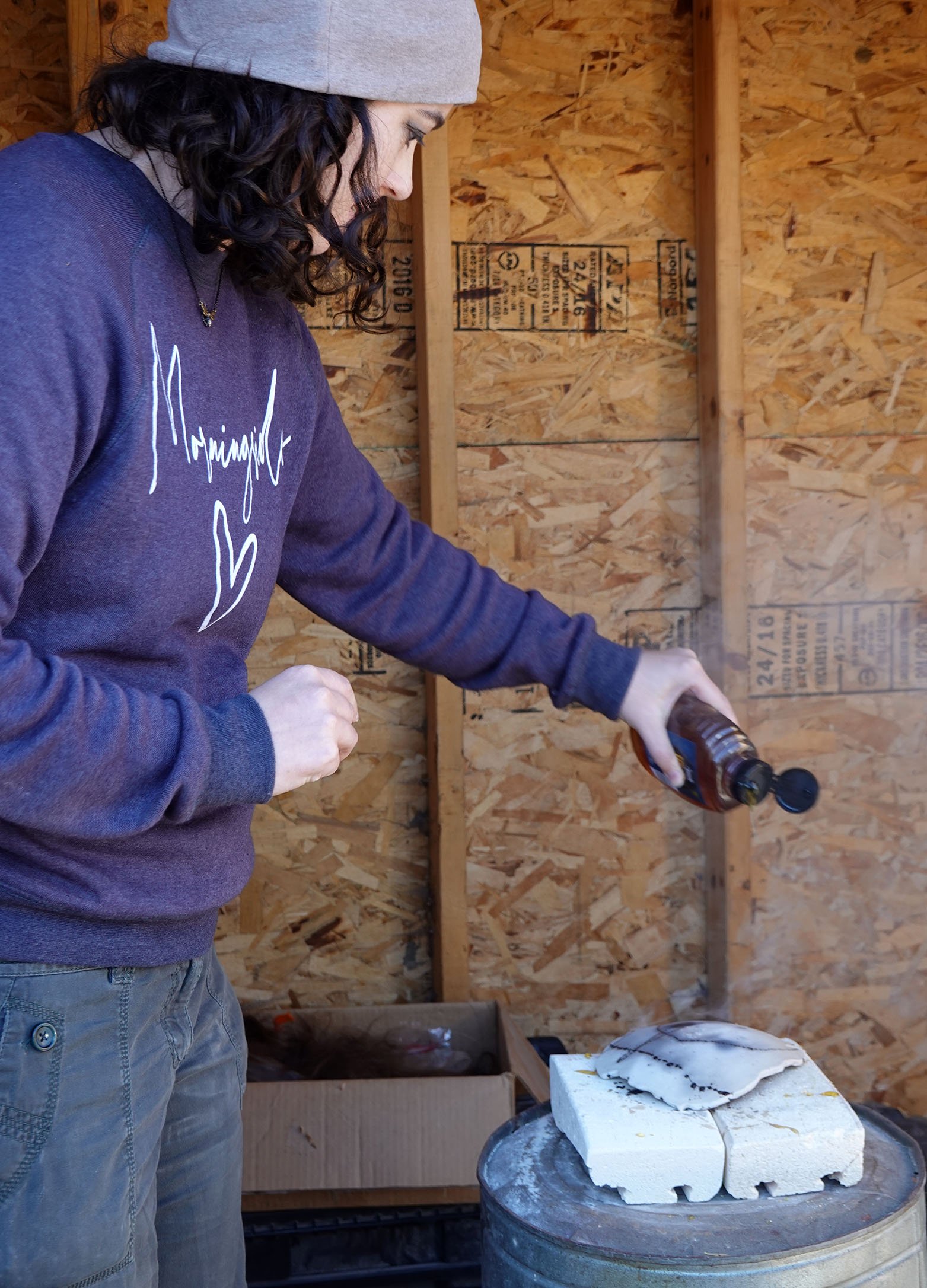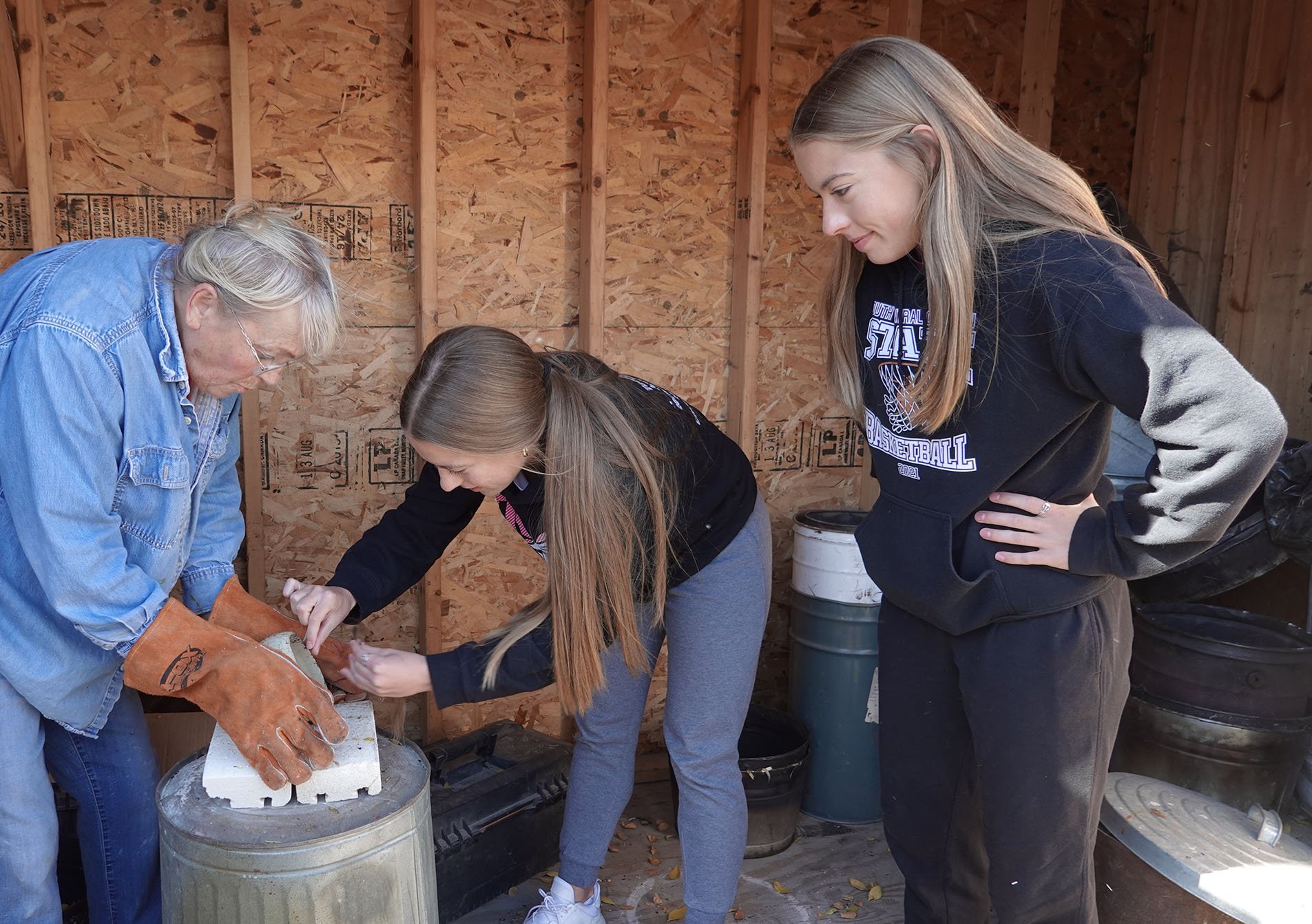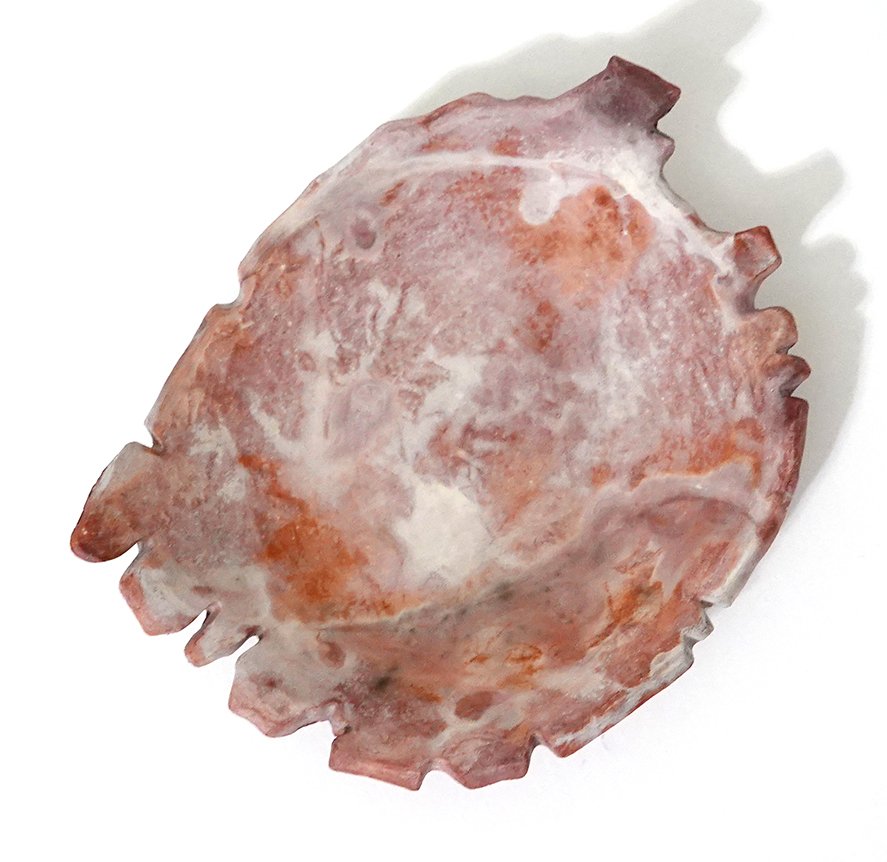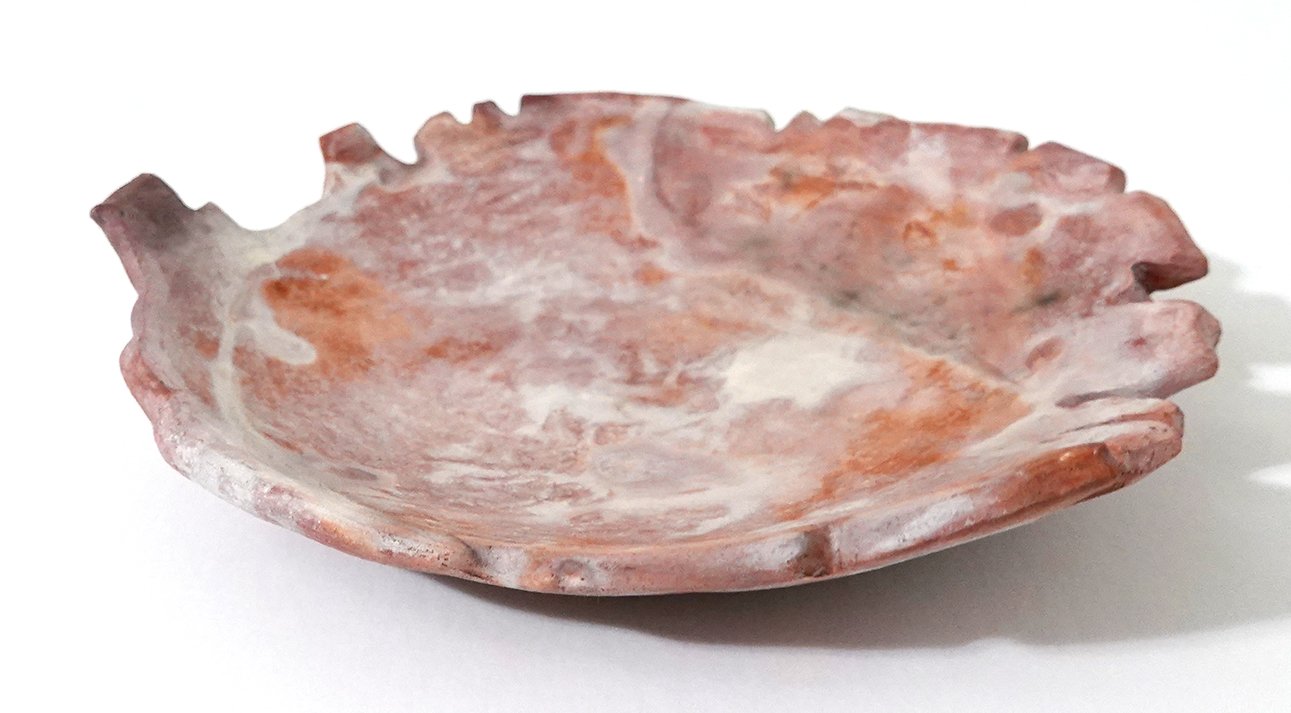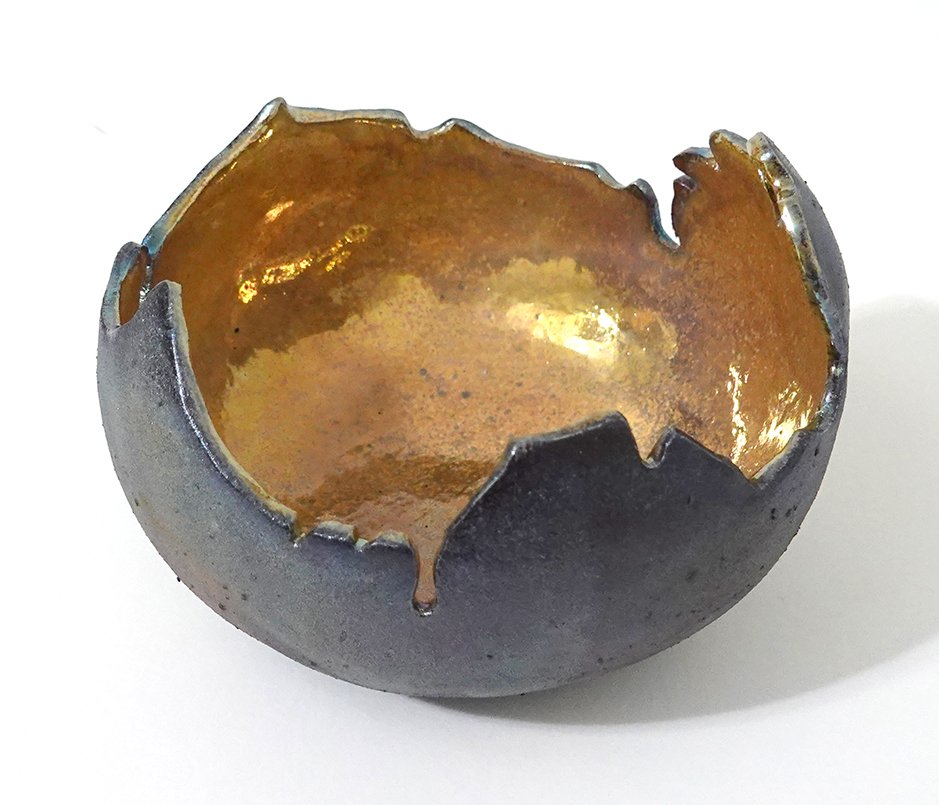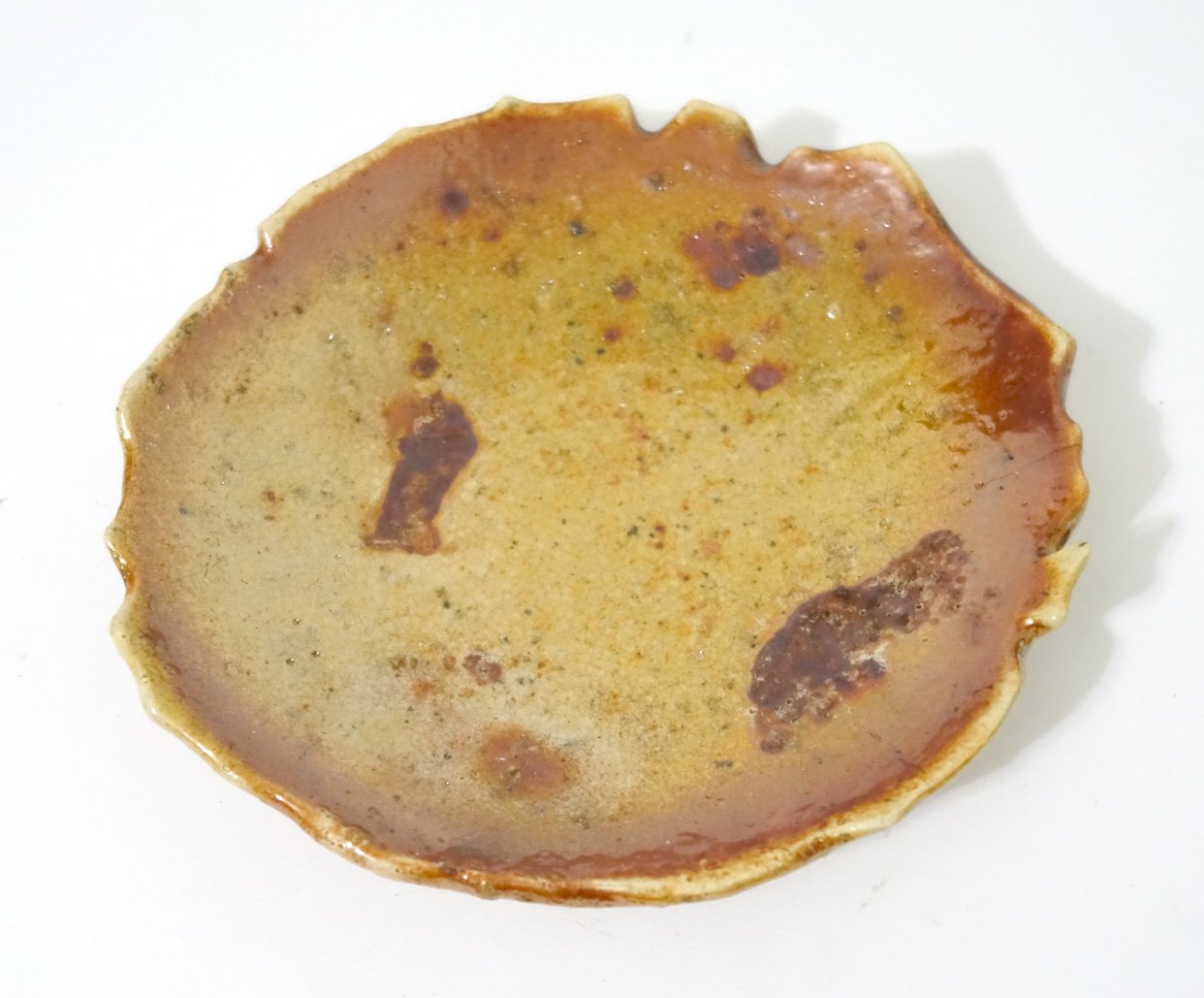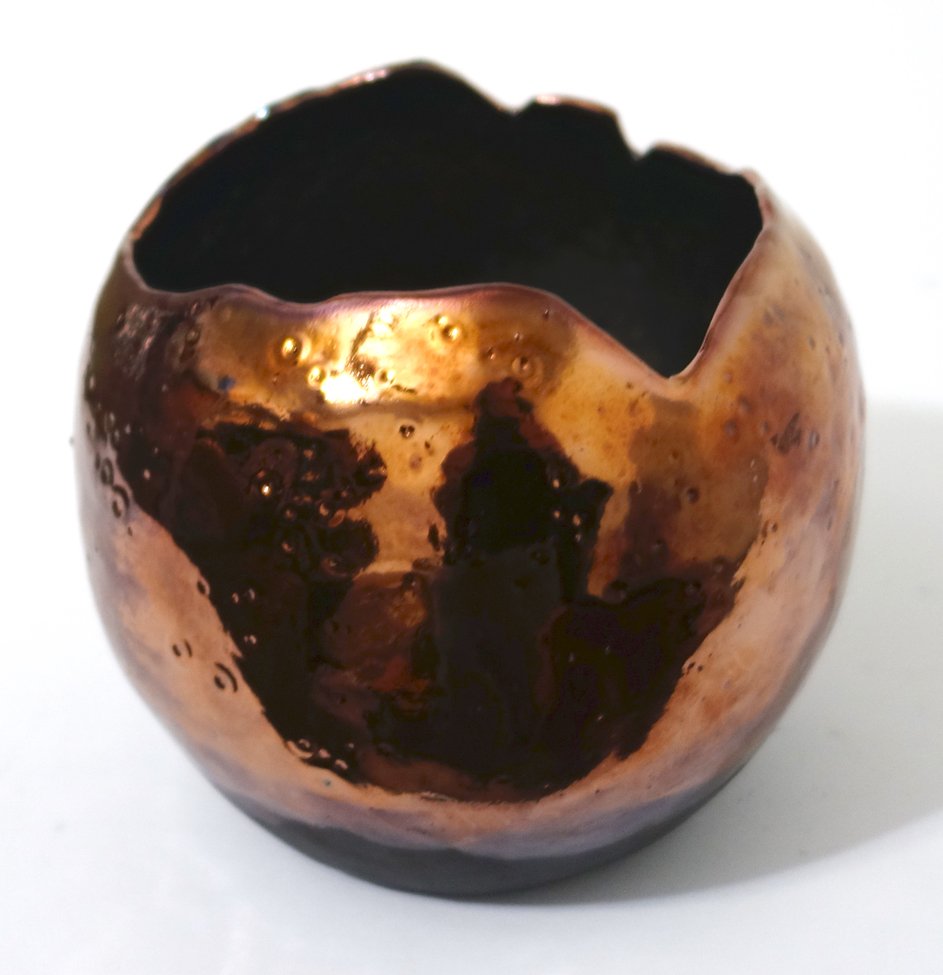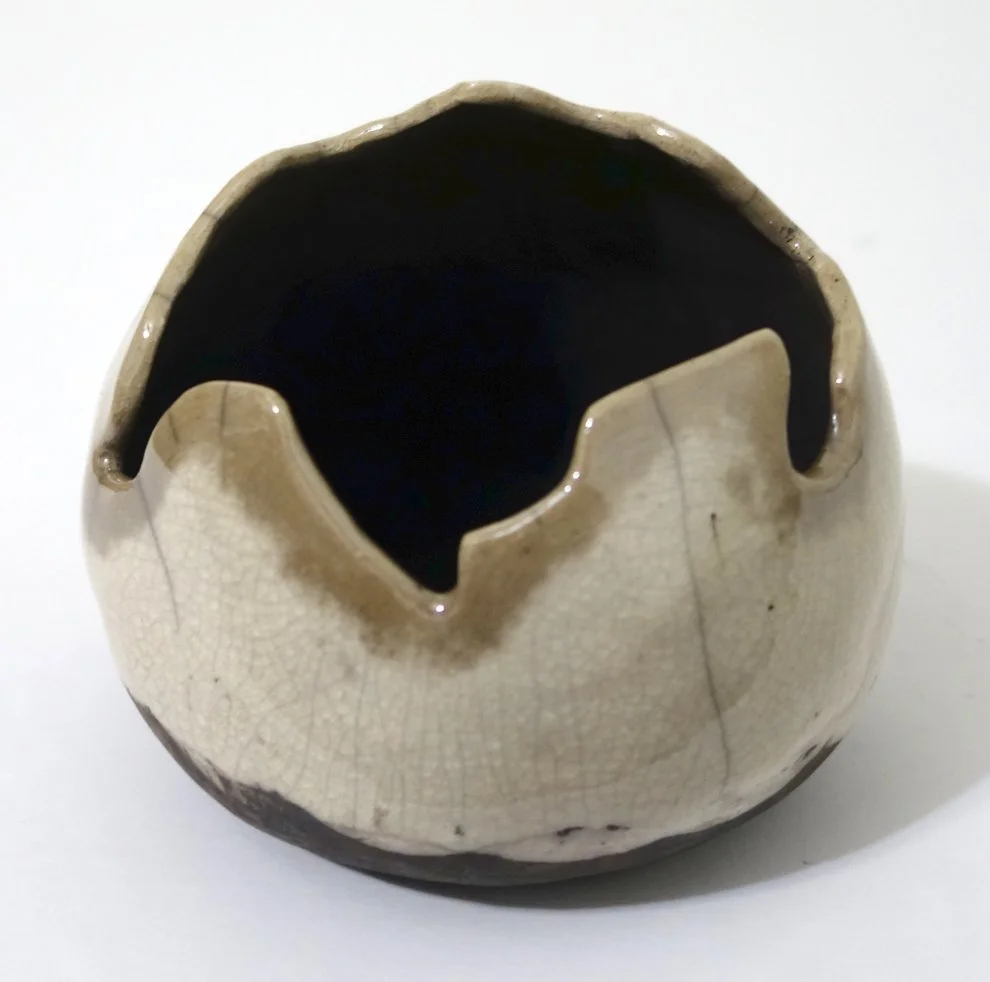After asking about it repeatedly for three years, I successfully convinced the lovely folks over at Dakota Potters Supply to allow us to do an obvara raku workshop on October 21, 2023! Obvara is a low-fire scalding-and-sealing process wherein you create a fermented sourdough/beer bath, plunge approximately 980°C naked ceramics fresh out of the kiln into it, wait for them to start to bloom with different tan-to-brown markings, and then arrest the surface carbonization process by rinsing the pieces off in a water bath. Obvara has an even higher chance of cracking due to the extreme thermal shocks involved than non-bath raku processes.
Getting the chance to do raku is relatively rare, and many ceramists haven’t even heard of obvara, let alone had the opportunity to do it - so I’m really grateful for the experience! Joining me on the trip were Morningside faculty Paul Adamson, alumni Calissa Hanson and Deb Murakami, and students Laura Greene, Taylor Greene, and Lauren Hedlund.
In addition, I learned about honey raku from a ceramist at this year’s ArtSplash festival - it’s basically like horsehair, feather, or sugar raku surface carbonization, but with honey! I brought some along and we tried it out too - though I want to experiment with it some more at future workshops as I was so excited about the obvara opportunity that I only kept one textured plate aside for honey raku.
Here are some photos from the workshop itself, soon to be followed by pictures of my finished pieces! I applied for and was granted funding from our Faculty Development Committee to help with my costs, so I made and brought 18 pieces along this go-round - both to make up for any thermal shock victims, and because I didn’t need to apply glaze to my obvara or honey raku ceramics so I could get more processed compared to when I need to apply 1-8 layers of glaze to each piece on-site before firing (for crackle and copper glazes or ferric chloride dips). If you’ve been following my raku workshop production, 18 is about double the number of ceramics I typically aim to bring.




